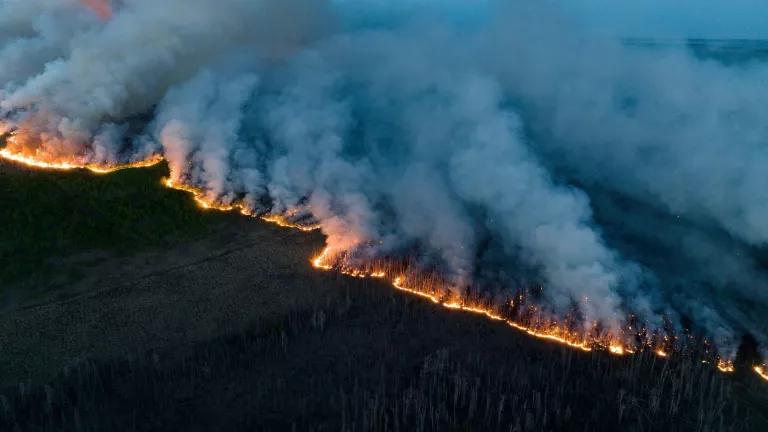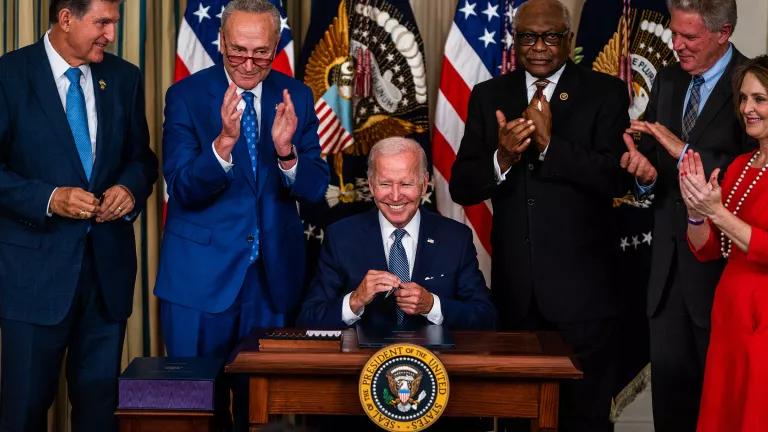Congress Must Act to Protect the Health of Storm Survivors

What is the value of hurricane and wildfire survivors’ health? The Senate will grapple with that question this month as the federal government barrels toward another shutdown deadline and Americans slowly recover from recent disasters. Congressional action will affect how well immediate needs are met and how well Puerto Rico, Texas, Florida, and California deal with future environmental and public health crises.
Hurricanes pose an array of threats to our physical health, from minor skin rashes to deadly carbon monoxide poisoning. Mental health also takes a hit, particularly among people with pre-storm symptoms or those who have endured multiple disasters. As we’ve learned from previous hurricanes, however, health outcomes vary dramatically from storm to storm.
That’s because health outcomes depend on the pre-existing local context. States and cities with relatively healthy and prosperous populations, resilient infrastructure, and the capacity to plan and implement storm responses are better able protect their citizens from injuries, illness, and death.
Take Houston, for example, which navigated record-breaking flooding during Hurricane Harvey. Most area hospitals remained dry thanks to improvements in flood protection standards after Hurricane Allison in 2001. And the city’s power largely stayed on, which made it easier for hospitals to function even as medical staff were kept away—or trapped at work—by flooded roads. The combination of advance planning and strong local healthcare coalitions helped limit the preliminary death toll from Harvey to fewer than 100.
Even so, those in Houston and across the state still feel the pain from Harvey. According to a survey of 24 Texas counties, one in six affected households had new or worsened health conditions two to three months after landfall. Nearly 40 percent of those surveyed had no health insurance; the highest uninsured rates being among Hispanics and those in deep poverty. Six in 10 residents with Harvey-related health issues had to postpone medical or dental care because of a lack of insurance, limited income, or difficulty accessing providers.
The role of socioeconomic and health disparities in storm recovery is even more obvious in Puerto Rico. Puerto Rico’s status as an unincorporated U.S. territory, its long-term economic woes, and existing public health problems set the stage for disaster well before Hurricane Maria swallowed the island in September 2017. The true death toll from the immediate aftermath is still not known, and more deaths are likely as residents struggle with water contamination, ongoing power outages, and suicidal thoughts.
Congress has a responsibility to help all America’s storm victims meet their basic needs. But it also has a responsibility to lessen the blow of future disasters. As health experts at the University of Miami and Boston University put it:
“Regrettably, the traditional ‘downstream’ approach to emergency management, one that prioritizes heroic rescue operations while largely neglecting the coordination of the recovery and reconstruction phases, runs counter to evidence about what it takes to prevent long-term, disaster-induced health consequences.”
This point is particularly important in the context of climate change. Although the country’s public health agencies have improved their response to individual emergencies, they’re still not prepared for the increasing demands of rising seas and stronger storms.
That’s why NRDC and its partners sent a letter to Congress in November requesting investment in both short-term recovery and longer-term planning and social equity.
Our recommendations included funding for:
- More comprehensive health plans for future disasters;
- Rebuilding and recovery that takes social and environmental vulnerabilities into account;
- Climate-related and other technical assistance to recovering communities; and
- “Rebuild by Design” competitions to help affected communities drive the recovery they want and need.
Hurricanes such as Harvey and Maria are dangerous and unpredictable. But with preparation and action, we can provide critical funding and services to protect public health, especially for our most vulnerable citizens. Having learned our lessons from recent disasters, it’s time for the administration and Congress to enact strong, bipartisan emergency supplemental legislation to do just that.




